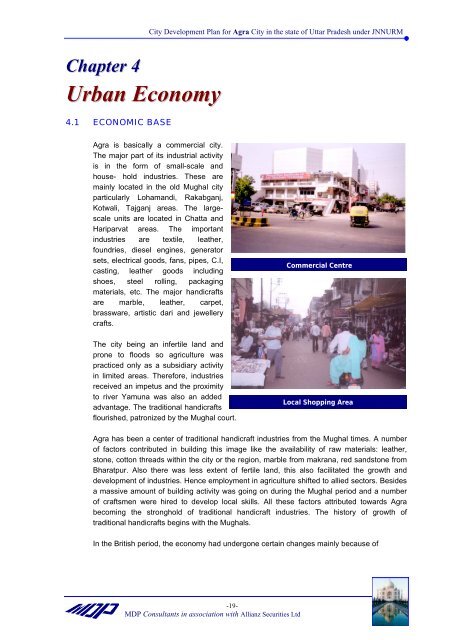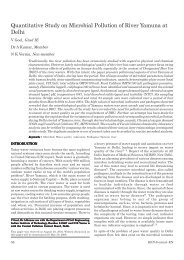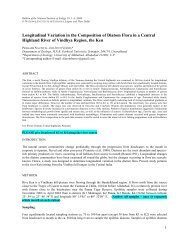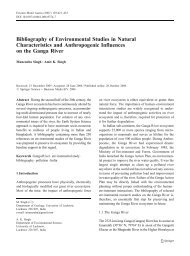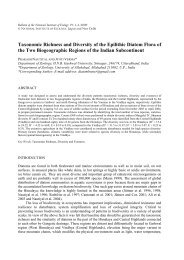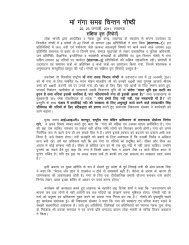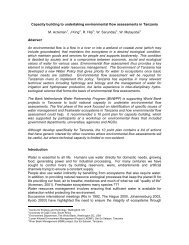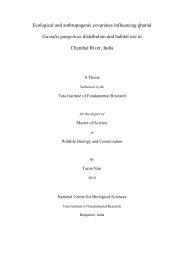JNNURM - GANGAPEDIA
JNNURM - GANGAPEDIA
JNNURM - GANGAPEDIA
Create successful ePaper yourself
Turn your PDF publications into a flip-book with our unique Google optimized e-Paper software.
Chapter 4<br />
Urban Economy<br />
4.1 ECONOMIC BASE<br />
City Development Plan for Agra City in the state of Uttar Pradesh under <strong>JNNURM</strong><br />
Agra is basically a commercial city.<br />
The major part of its industrial activity<br />
is in the form of small-scale and<br />
house- hold industries. These are<br />
mainly located in the old Mughal city<br />
particularly Lohamandi, Rakabganj,<br />
Kotwali, Tajganj areas. The largescale<br />
units are located in Chatta and<br />
Hariparvat areas. The important<br />
industries are textile, leather,<br />
foundries, diesel engines, generator<br />
sets, electrical goods, fans, pipes, C.I,<br />
casting, leather goods including<br />
shoes, steel rolling, packaging<br />
materials, etc. The major handicrafts<br />
are marble, leather, carpet,<br />
brassware, artistic dari and jewellery<br />
crafts.<br />
The city being an infertile land and<br />
prone to floods so agriculture was<br />
practiced only as a subsidiary activity<br />
in limited areas. Therefore, industries<br />
received an impetus and the proximity<br />
to river Yamuna was also an added<br />
advantage. The traditional handicrafts<br />
flourished, patronized by the Mughal court.<br />
Agra has been a center of traditional handicraft industries from the Mughal times. A number<br />
of factors contributed in building this image like the availability of raw materials: leather,<br />
stone, cotton threads within the city or the region, marble from makrana, red sandstone from<br />
Bharatpur. Also there was less extent of fertile land, this also facilitated the growth and<br />
development of industries. Hence employment in agriculture shifted to allied sectors. Besides<br />
a massive amount of building activity was going on during the Mughal period and a number<br />
of craftsmen were hired to develop local skills. All these factors attributed towards Agra<br />
becoming the stronghold of traditional handicraft industries. The history of growth of<br />
traditional handicrafts begins with the Mughals.<br />
In the British period, the economy had undergone certain changes mainly because of<br />
-19-<br />
MDP Consultants in association with Allianz Securities Ltd<br />
Commercial Centre<br />
Local Shopping Area


